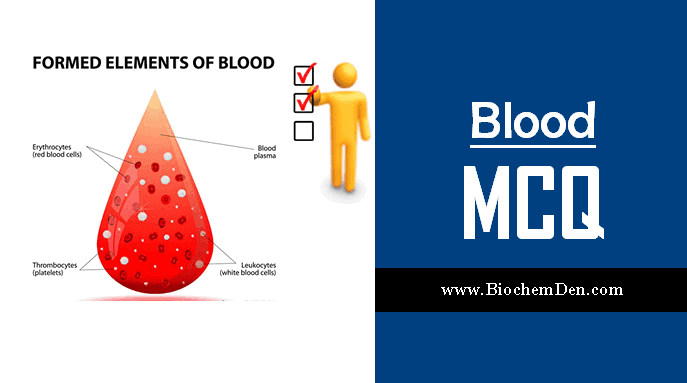Estimation of blood glucose levels by the Folin-Wu method is one of the clinical biochemistry protocols. You can download these protocols from the given link.
Blood glucose levels play a vital role in maintaining body homeostasis. The presence of high or low blood sugar levels causes various health problems.
Glucose is a monosaccharide (carbohydrate) found in fruits, vegetables, beans, nuts, grains, potatoes, etc. In humans, glucose is converted into energy through cellular respiration. The measurement of blood glucose levels helps detect hypoglycemia or hyperglycemia and diabetes mellitus.
The Folin-Wu reaction is an enzymatic colorimetric assay of reducing sugars. This method was developed by Dr W.T. Scott Folin (1879 – 1969) and George Leland Wu (1910-2002).
In this test, the serum/plasma sample is treated with sodium nitroprusside solution and then ferrous sulfate. After incubation at 37°C for 30 min, the yellow colour intensity produced is measured spectrophotometrically at 540 nm using Folin reagent (a mixture of phosphoric acid 6M + ammonium molybdate 4H2O).

Advantages of the Folin-Wu Method for Blood Glucose Estimation
Blood glucose level estimation can play a significant role in diabetic management; it helps doctors decide whether to give insulin and provides information on glycemic control. The technique of estimating blood glucose levels has evolved. Several methods are available, such as enzymatic assays, immunoassays, colorimetric assays, turbidimetric assays, and gas chromatography.
There are two types of diabetes-type I & type II.
- A lack of insulin production causes type I diabetes melitus (T1DM). T1DM patients require daily injections of insulin.
- Type 2 DM (T2DM) is caused by the body’s cells’ inability to utilize the insulin produced properly. People with T2DM require insulin therapy along with behavioural changes and lifestyle modifications.
Numerous studies suggest that a simple blood test can predict whether someone is at risk of developing diabetes, and it gives doctors a chance to intervene before full-blown disease sets in. One such test is the HbA1c.
The folin-Wu method was developed in 1953 for measuring total blood sugar. It involves adding a reagent containing pyruvic acid and phenol to a sample of whole Blood. Phenol reacts with pyruvate to form resorcinol, absorbing light at 500 nm. Resorcinol binds to haemoglobin to form a pink coloured complex.
If the concentration of total sugars in the blood sample remains constant, then the amount of absorbance will be proportional to the total hemoglobin concentration. Thus, the concentration of total blood sugar can be determined from the amount of absorption measured at 500 nm.
What is the Folin-Wu tube?
The modification of the Folin and Wu method for quantitative blood sugar determination used in this laboratory consists merely in:
- Diluting the unknown after the addition of the phosphomolybdate – phosphotungstate sugar reagent and development of colour until it is approximately the same shade as the standard, instead of to a constant amount, before a calorimetric comparison is made; and
- Introduce this variable factor, the amount of dilution, in the final formula for calculating the amount of dextrose in the unknown.
Estimation of Blood Glucose Levels by the Folin-Wu method
Aim:
To estimate the glucose level in the blood by the Folin-Wu method.
Principle:
When glucose or other reducing agents are treated with an alkaline copper solution, they reduce the copper. As a result, an insoluble cuprous oxide is formed. The reaction depends on temperature, duration of heating, a degree of alkalinity. It may vary the ratio of glucose to cuprous oxide form after heating for a period. The cuprous oxide form can react with phosphomolybdate to form a molybdenum blue coloured complex, which can be read colorimetrically using a red filter at 680nm.
Reagents:
- 1% Sugar Solution: 1 gram of sugar is added to 100 mL of saturated benzoic acid.
- Working standard sugar solution: 2 mg per 2 ml of the above solution.
- An alkaline copper solution:
- Solution A: Dissolve 2% Na2CO3 in 0.1N NaOH.
- Solution B:5% CuSO4 in 1% sodium potassium tartrate or Rochelle salt
Mix 50ml of solution A with 1 ml of solution B.
- Phosphomolybdic acid: To 35grms of molybdic acid, add 5 grams of sodium tungstate, 200 ml of 10% NaOH, and 200 ml of water. It is boiled vigorously for 20-30 minutes to remove the whole ammonium present in molybdic acid. The solution is cooled and diluted to about 350 ml, and 125 ml of 85% phosphoric acid (ortho) is added and makeup to 500 ml with distilled water.
- 10% Sodium tungstate
- 2/3 N H2SO4
Procedure:
Deproteination of Blood:
1 ml of Blood is transferred to a boiling tube containing 7 ml of water, then 1 ml of 10% sodium tungstate is added, mixed well, followed by 1 ml of 2/3 N H2SO4 with shaking. It is allowed to stand for 10 minutes, and it is then filtered. This filtrate is called tungstic acid blood filtrate and is taken as a test sample.
2 ml of tungstic acid blood filtrate is transferred to a folin-wu tube graduated at the 25 ml mark, and to other similar folin-wu tubes, 2 ml of standard glucose solution and 2 ml of water as blank are added. 2 ml of alkaline CuSO4 is added to each of the three tubes. Now the surface of the mixture is level with the 4ml mark of the Folin-Wu tube. The folin-wu tubes are placed in a boiling water bath for 8 minutes, and they are cooled under running water. To each tube, 2 mL of the phosphomolybdic acid solution is added. After 1 minute, it is diluted with water up to the mark. The solution is transferred to a suitable tube, and the OD is read at 680nm.
Normal values:
- The normal blood sugar level ranges from 8 to 120 mg / 100ml of Blood
- In mild diabetic conditions, the value of blood glucose is from 140-300 mg / 100ml of Blood, and in severe diabetic conditions, values of up to 1200mg / 100ml of Blood have been noted.
- Low blood sugar level values are formed in insulin administration, Addison’s disease, hypoglycemia, and hypopituitarism.
Report:
_______ mg of glucose is present in 100 ml of the given blood sample.
Calculation:
Mg of glucose/100ml of blood = mg of glucose in standard X (OD of test/OD of standard) X 100/ 0.2
Some other protocols for reference and free download:
- Assay of Salivary Amylase enzyme activity
- Effect of Temperature on Amylase activity
- Estimation of Proteins by Lowry method
- Assay of Urease Enzyme Activity
Clinical Significance
- Elevated levels of blood glucose are most frequently found in people with diabetes mellitus.
- Hyperglycemia may also occur due to hypothyroidism, hyperpituitarism, liver disease, Cushing’s syndrome, traumatic injury, and infection.
- Decreased blood glucose levels may result from hyperinsulinism, liver disease, and deficiencies in adrenal, thyroid, or pituitary hormones.
Final words
The purpose of this experiment is to estimate the blood glucose level of a person. The blood glucose estimation is done by using the Foli-Wu method. This experiment is done in a laboratory, as it does not require a lot of equipment. Once the blood glucose estimation is done, it is compared with the normal levels of blood glucose and the results are analyzed.
Discover more from Biochemistry Den
Subscribe to get the latest posts sent to your email.


